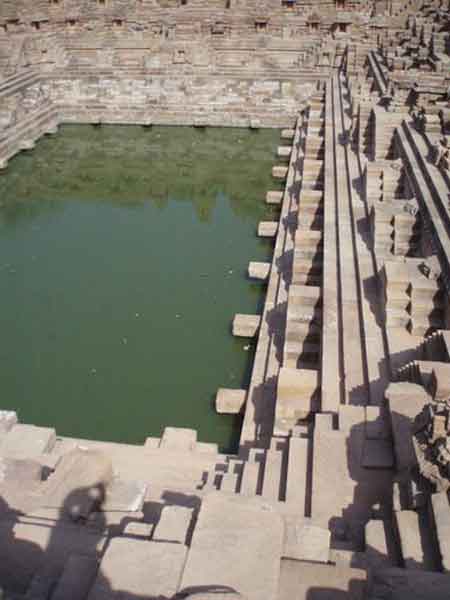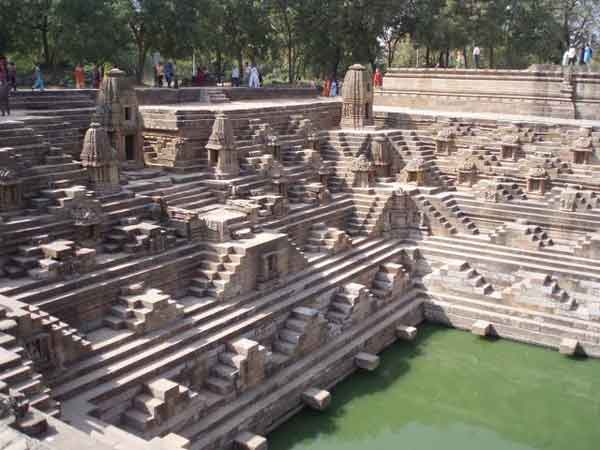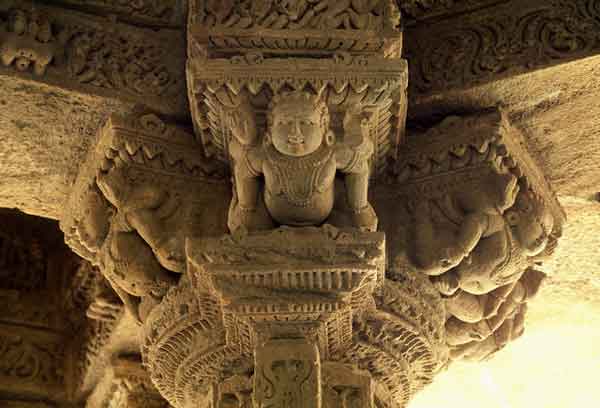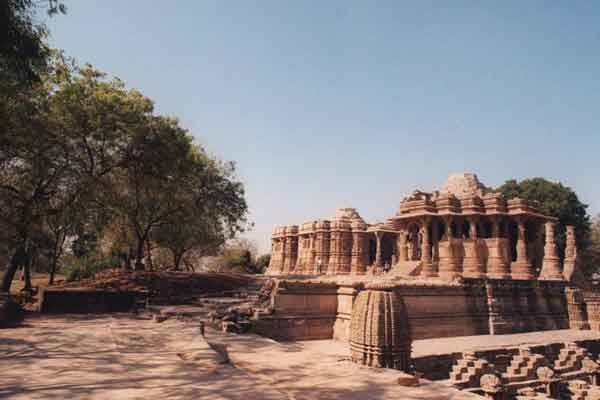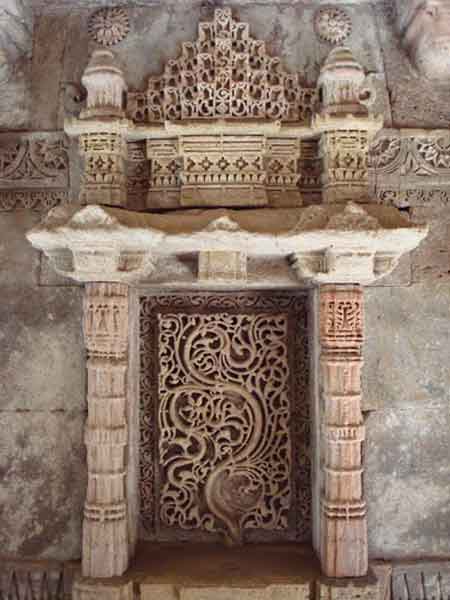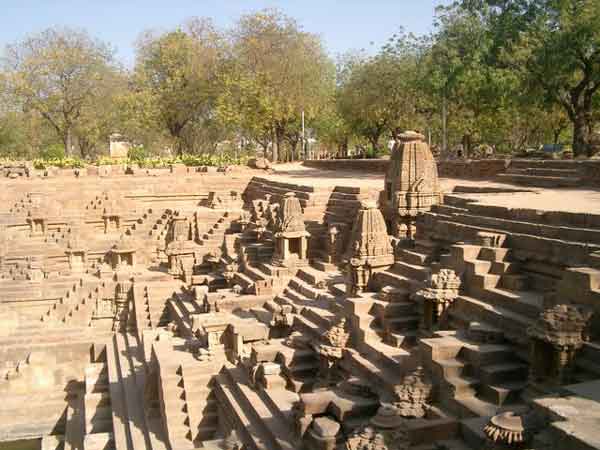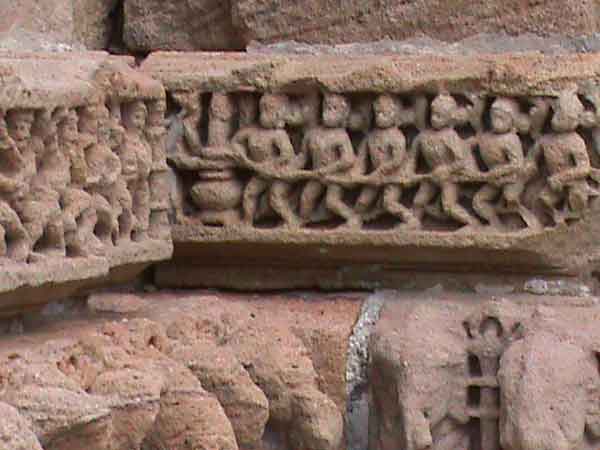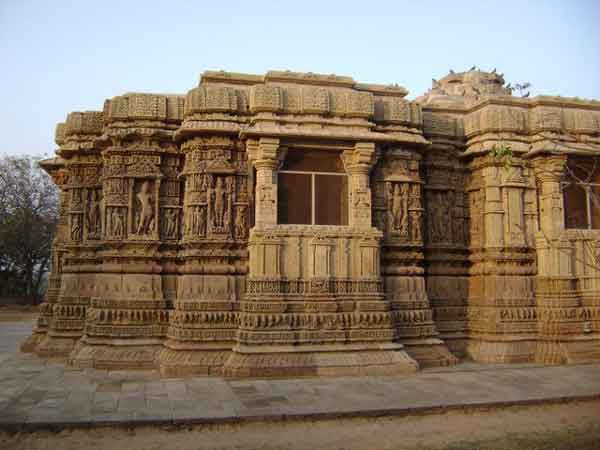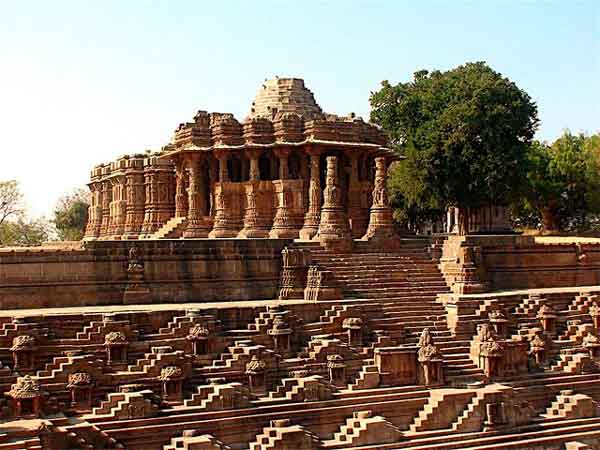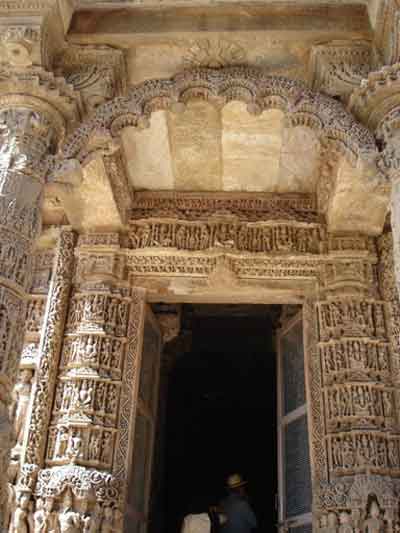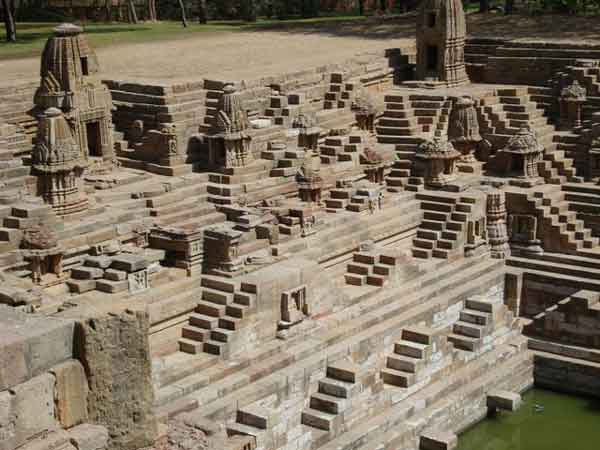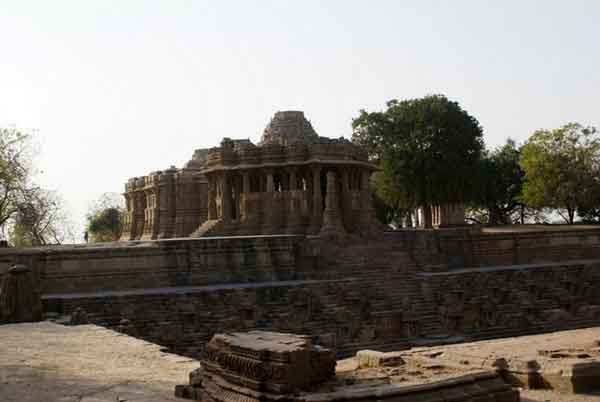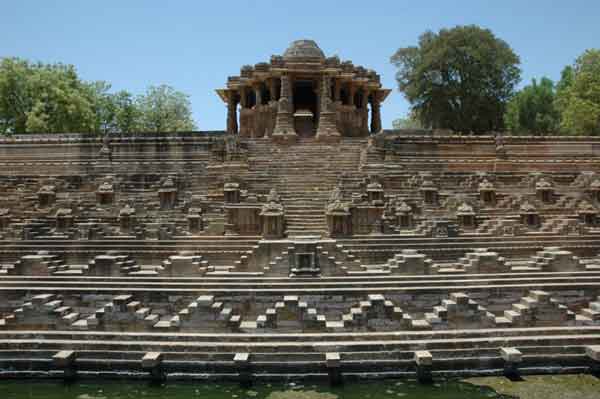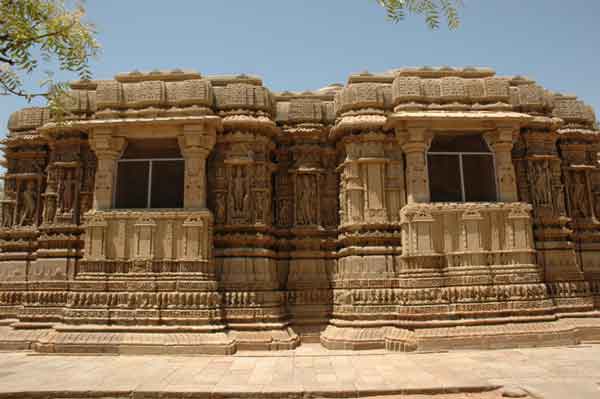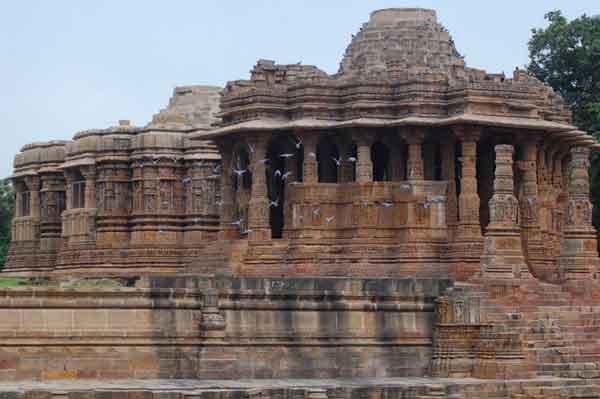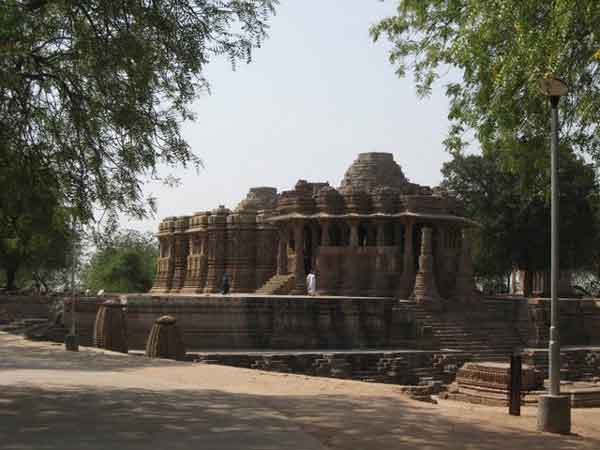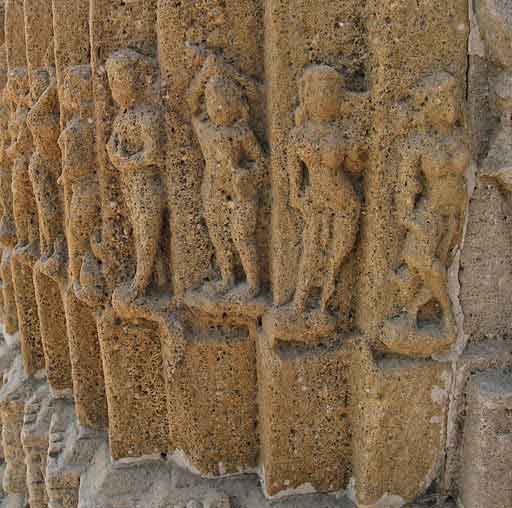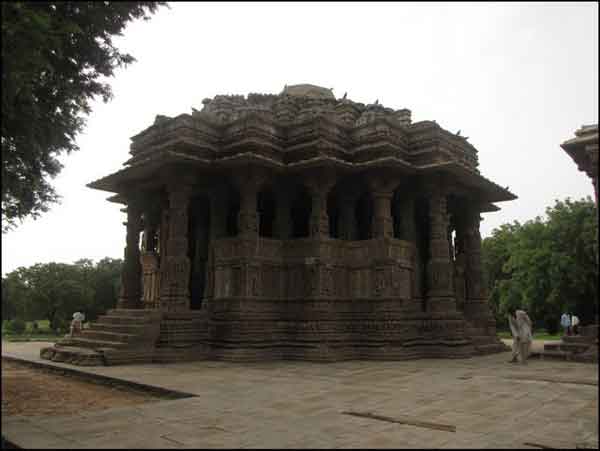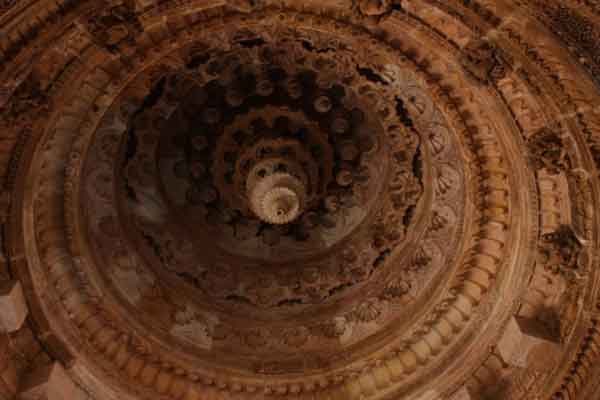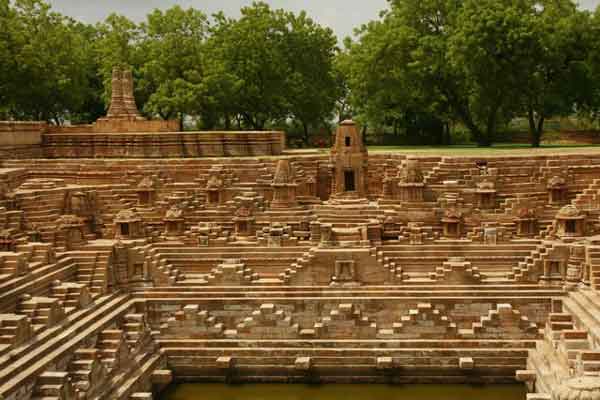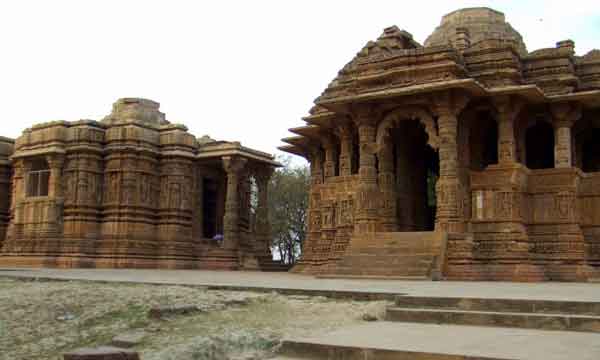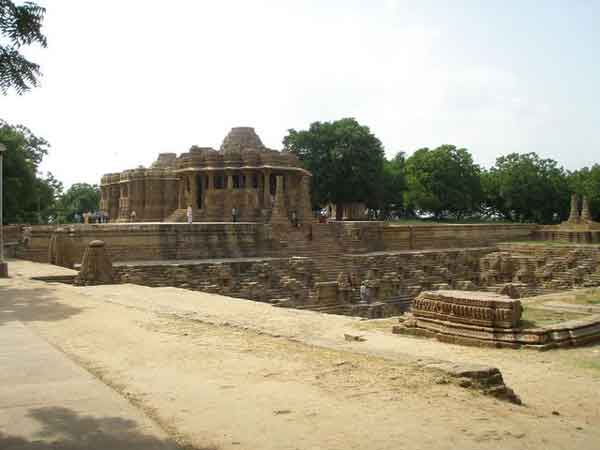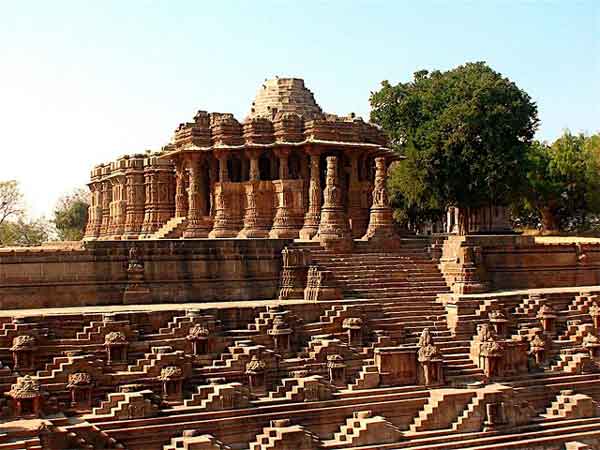Sun Temple - Modhera |
About: |
| The Sun temple of Gujarat is situated at Modhera. It is akin to the Sun Temple at Konark and is dedicated to the Sun God, Lord Surya. Though the temple has lost its glory of the yore, it is still an architectural and art master piece. The temple serves as the venue for the Dance Festival held in January each year. It was built in 1026 AD by the Solanki King Bhimdev I of Patan. The Solankis were Suryavanshis, the descendents of Sun God and therefore built this temple in the honor of Lord Surya. However, the temple was plundered by Mahmud Ghazni.
Devotees perform ceremonial ablutions here before worshipping the Sun God. The structure of temple consists of Sabha Mandap and Guda Mandap. Sabha Mandap is big hall used for meeting and conference. Sabha Mandap is open from all sides. Guda Mandap is the original temple of Lord Sun where rays of the rising sun fall directs on image of Lord Surya. Modhera or Modherapura also known as Mundera is said to have been the original settlement of modha Brahmans. Having its legendary past relating to the Ramayana it is further believed that modha Brahmans received Modhera as a krsnarpana on the occasion of the marriage of Rama and Sita. According to the Skanda Purana (3.2.40-67) after defeating Ravana, Lord Rama consulted Muni Vasishta to show him a place of pilgrimage where he could go and purify himself of the sin of Brahma hatya (the slaying of a Brahman). The Muni showed him dharmaranya. From the point of view of structural designing, the sun temple at Modhera is truly the one of its kinds. The Modhera sun temple encompasses three main chambers, namely Surya Kund, Sabha Mandap and Guda Mandap. Surya Kund is basically a beautifully carved stepped tank that was named after Sun God. Sabha mandap is the hall, where people gather for discussions on religious topics. Guda Mandap is the sanctum sanctorum, also known as the main temple. One of the most striking features of the Modhera Sun temple is that the first ray of the sun falls on the deity at the time of the equinoxes. The temple has a unique architecture and consists of a number of other magnificent buildings in the vicinity. The main buildings are the Surya Kund, the Sabha Mandap and the Guda Mandap (Sanctum Sanctorum). Apart from this, there is a beautiful hall in between the Sabha Mandapa and the Sanctum Sanctorum. It has remarkable pillars and arches and shows the different aspects of the Sun God in each month.
|
Location info: |
| Address:Pushpavati river in Modhera,Gujarat,India |
| District: Mehsana |
| Nearest City: Ahmedabad |
| Best time to visit: October to March |
Climate/Weather: |
| Summers 23°- 44°C. Winters 10°-36°C |
History: |
| According to the Skanda Purana and Brahma Purana, the areas near Modhera were known during ancient days as Dharmaranya (literally meaning the forest of righteousness). According to these Puranas, Lord Rama ,after defeating Ravana, asked sage Vasistha to show him a place of pilgrimage where he could go and purify himself from the sin of Brahma-hatya (the sin of killing a Brahmin, because ravan was a Brahmin by birth). Sage Vasistha showed him Dharmaranya, which was near the modern town of Modhera. In the Dharmaranya, he settled at a village Modherak and performed a yagna there. Thereafter he established a village and named it Sitapur. This village is about 8 km from Becharaji Modherak village and it subsequently came to be known as Modhera.
The Sun Temple was built by Raja Bhimdev I of Solanki Dynasty in AD 1026. This was the time when Somnath and the adjoining area was plundered by Mahmud Ghazni and reeled under the effects of his invasion. The Solankis, however, regained much of their lost power and splendour. Anahilvad Patan, the Solanki capital, was restored to glory. Royalty and traders jointly contributed to build grand temples.Solankis were considered to be Suryavanshis, or descendants of Sun god. The temple was so designed that the first rays of the sun fell on the image of Surya, the Sun God, at the time equinoxes. |
Interesting things to do: |
| Festival: Modhera dance festival is the major festival that is observed by the Sun Temple. This dance festival is organized to keep the Indian traditions and culture alive. It is held in the third week of January every year. The classical dance forms in the premises of this temple revive the imperial ambiance during the period. Gujarat Tourism organizes this event to promote tourism at this place. |
Interesting things to Visit: |
| Surya Kund: Surya Kund is a deep stepped tank in the front of the temple. The tank was named after the Lord Surya (Sun God). In the earlier times, this 100 sq meter rectangular tank was used to store pure water. The devotees used to take a halt here for ceremonial ablutions before moving towards the temple. Not less than 108 shrines mark the steps of this tank including the shrines dedicated to Lord Ganesha, Lord Shiva, Sheetala Mata and many others. In front of this tank, a huge 'torana' (archway) leads to the Sabha Mandap.
Sabha Mandap: Guda Mandap: |
Mobile range info: |
How to reach? |
| Nearest Railway Station: Mehsana Railway Station |
| Nearest Airport:Ahmedabad airport. |
| Road Transport:State transport buses and private luxury coaches are available to reach Modhera from various cities of Gujarat. |
Nearest Visiting places: |
| Rani ki Vav: The Rani ki Vav, a step well in Patan is an excellent example of subterranean architecture in Gujarat and has steps that lead down to the water level. This Vav is situated about 134 km north-west of Ahmedabad, and about 57 km from Mehsana. The Rani ki Vav was built by Rani Udayamti of the Solanki dynasty, probably as a memorial for her husband Bhimdeva I (1022 - 1063 AD).
Sahastralinga Talav: Khan Sarovar: Hemachandracharya Gyan Mandir: Mahavir Swami Temples: Langhanaj locality: |
Nearest Petrol Pump: |
| Jyothi Petrol Pump:Mehsana,Gujarat,India RM Petrol Pump:Patan,Gujarat,India |
Hotels/Lodge/Accommodation: |
| Hotel Gurjari:Patan,Gujarat,India Hotel Siddharaj Place:Patan,Gujarta,India |
Things to carry: |
Tips & Suggestions: |
Help Line/Phone Number: |
| Police Station: |
| Nearest Hospital: Old Janta Hospital:Patan,Gujrat,India Government Maternity Hospital:Patan,Gujarat,India |
| Society/Community Phone Number |
| Links:www.templenet.com |
Video
Dynamic View
|
|
| Ajitnath Temple |
| Ajitnath Temple located 56 kms from Mehsana, nestled in the hills of Taranga, is the temple devoted to Ajitnath, the 22nd Tirthankara of Jains. One of the most beautiful locations, the temples are a "must visit" on a Gujarat traveller's circuit. Though the hills are not high, only 365 metres (1200 ft), they offer a marked change from the surrounding region, due to their atmosphere and panoramic views.The highlights of the temple are its huge pillars, softened by the beautiful carvings over them. In the centre is the octagonal nave topped by a beautifully decorated carved ceiling, 11mts in diametre. The porches on the sides are large and spacious with equally impressive columns. The temple, which has retained its original form and design has a storeyed arrangement both inside and outside.....more |
| Langhanaj Mehsana |
| Langhanaj Mehsana is a municipal city situated in the Mehsana district of Gujarat. It is located at a distance of 74 km from Ahmedabad. Mehsana is one of the largest cities in Gujarat and houses one of the biggest iron and steel markets in India. In addition to this, it also has a Dudhsagar Co-operative milk dairy, which boasts of being the largest milk dairy in entire Asia. The Oil Natural Gas Corporation of India has set up a big establishment in the city. Thus, the city is quite important from Industrial perspective. However, the city also offers some attracions, which make it significant from travel and tourism point of view....more |
| Thol Wildlife Sanctuary |
| Located in the Mehsana district of the western Indian state of Gujarat, the Thol Wildlife Sanctuary is quite rich in its wildlife composition. The sanctuary is situated about 40 kms northwest from the city of Ahmedabad and covers an area of approximately 7 sq. km. The sanctuary is primarily based on the Thol Lake, which was established in the year 1912. However, it was declared as a sanctuary in the year 1988. It is also well known as the Thol Bird Sanctuary. The sanctuary is mainly based on the Thol Lake that attracts thousands of migratory birds, every year.The main attraction of the Thol Wildlife Sanctuary is its great collection of avifauna. Several bird species including both resident and migratory types can be found in this sanctuary......more |
| Shankeshwar Temple |
| The idol of Mulnayak Bhagawan Shankheshvar Parshvanath is very ancient. Formely, the idol of Mulnayak was in the temple in the one-storeyed residential place in the orchard of Shri Maganlal Karamchand. Many times musical notes were heard here at night. Shri Anandji Kalyanji Trust brought this idol for hospitality to the temple of Bhagwan Dharmanath in Panjarapole in the year 2015 of the Vikram era. it was to be taken to C.N.Vidhlaya. But since the residents of this place raised an objection, Shri Anandji Kalyanji Trust built this new temple and on the first day of the dark half of the month of Vaishak in the year 2023 of the Vikram era, this idol was installed under the auspicies of Acharya Udhaysuri Maharaj Saheb and Nandansuri Maharaj Saheb. In this temple, there are idols of Bhagwan Adishwar, Bhagwan Shantinath, Parshva Yaksh and Padmavatidevi.....more |
